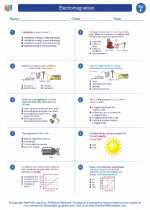Midnight Sun
The midnight sun is a natural phenomenon that occurs in the polar regions during the summer months. It is a time when the sun remains visible at midnight or even during the entire night. This phenomenon occurs because of the tilt of the Earth's axis and its orbit around the sun.
Causes of the Midnight Sun
The Earth is tilted on its axis at an angle of approximately 23.5 degrees. During the summer months, the North Pole is tilted towards the sun, causing the sun to be visible for 24 hours a day in the polar regions. This phenomenon is reversed in the Southern Hemisphere, where the South Pole experiences the midnight sun during the opposite time of the year.
Locations
The midnight sun can be observed in regions within the Arctic Circle, such as northern Norway, Sweden, Finland, Alaska, Canada, and parts of Russia. In these areas, the sun does not dip below the horizon during the summer solstice, which is the longest day of the year.
Effects on Nature and Human Activity
The midnight sun has significant effects on the natural environment and human activity in the polar regions. It provides extended hours of daylight, allowing plants to undergo photosynthesis for longer periods and promoting the growth of vegetation. In addition, the phenomenon also impacts the behavior and activity patterns of animals that inhabit these regions.
Study Guide
- What is the midnight sun?
- What causes the midnight sun?
- Where can the midnight sun be observed?
- What are the effects of the midnight sun on nature and human activity?
Understanding the phenomenon of the midnight sun can provide insights into the Earth's axial tilt, its relationship with the sun, and the unique environmental conditions in the polar regions.
.◂Science Worksheets and Study Guides Sixth Grade. Electromagnetism

 Activity Lesson
Activity Lesson
 Worksheet/Answer key
Worksheet/Answer key
 Worksheet/Answer key
Worksheet/Answer key
 Worksheet/Answer key
Worksheet/Answer key
 Vocabulary/Answer key
Vocabulary/Answer key
 Vocabulary/Answer key
Vocabulary/Answer key
